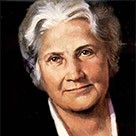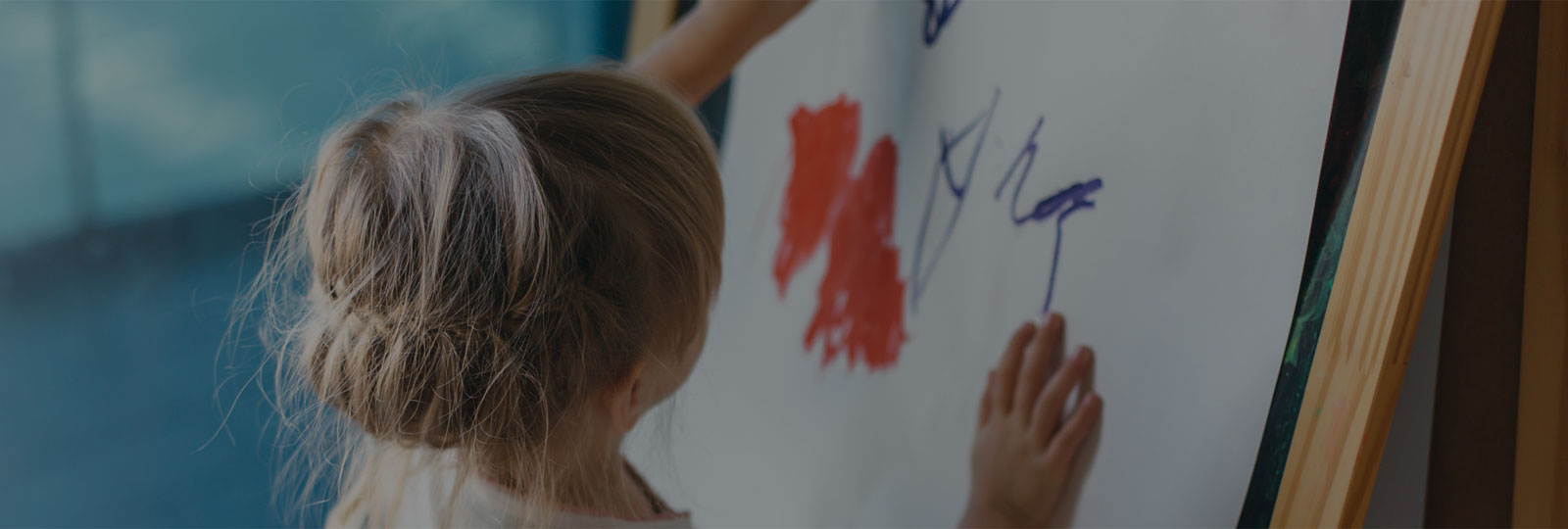
„Help me to do it myself.”
Maria Montessori
Primary children learn by doing. The concrete materials in the classroom allow the children explore the world through their senses, through touch and motion, and by observing and engaging with others. One main feature of Montessori education is its hands-on approach to learning. Students work with specially designed materials, manipulating and investigating until they master the lesson inside. Teachers guide students through the curriculum as children are ready for each new challenge, introducing lessons and then letting children practice what they have learned. As children grow, the classroom materials grow with them in the sense that older children use the materials to explore curriculum in new and deeper ways.
The 3-6 year old goes through an intense period of change, including the transition to cooperative play and more complex social interactions, a language explosion leading to beginning skills in writing and reading, the emergence of number sense and the foundations of math, and great changes in physical development. The Montessori teacher responds to these changes in social and emotional, cognitive, and physical development with appropriate lessons to support each child’s growth and emerging capabilities. Primary children come to school five days a week, and may choose to stay for mornings-only or a full day. Kindergarteners enjoy a full day of school.
Practical Life
Practical Life activities are central to the Montessori classroom and prepare the child for all other areas. Practical Life exercises give children the opportunity to refine their fine motor skills, hand-eye coordination, hand strength, balance, concentration and develop confidence, self-esteem, independence and concentration. Through the repetition of Practical Life activities, children develop practical skills that will serve them all their lives. Some of the Primary Practical Life exercises include Pouring, Lacing, Scooping, Flower Arranging, Food Preparation and Serving, and Table Washing.
Sensorial
Sensorial materials are designed to help children learn about qualities like color, size, shape, length, texture, and sound. 3-6 year olds are increasingly able to make finer and finer discriminations of the many stimuli all around them. Sensorial activities assist children in refining this skill and becoming good observers of the world. Montessori saw the importance of the manipulation of objects to aid the child in better understanding his environment. Through the child’s work with Sensorial material, the child is helped to make abstractions, he is helped in making distinctions in his environment, and the child is given the knowledge not through word of mouth, but through his own experiences. Sensorial materials in the Primary classroom include Knobbed Cylinders for practice with dimension, Color Tablets, Rough and Smooth Boards, Geometric Solids, the Pink Tower, and the Binomial Cube.
Language
Language pervades the Montessori classroom and crosses all curriculum areas. Primary students discover the awesome power of writing through the use of sandpaper letters, the metal insets, and the movable alphabet. Simultaneously, they experience the ability to associate sounds with symbols and discover the mechanical ability to translate that knowledge into writing. The ability to write opens the door to reading. Children expand their ability to communicate by increased auditory discrimination, developing an enormous vocabulary, critical thinking, and fluency. They are exposed to concepts of print, develop a reading and writing protocol, and build a relationship with narrative literature. The simultaneity of writing and reading leads to participation in group discussions, reflection, sharing, drawing, singing, poetry, storytelling, read-alouds, dramatic play, and creative movement.
Mathematics
Classrooms are filled with stimulating Montessori mathematics materials designed to promote primary student growth in understanding mathematical concepts. Children develop numeracy and numeral recognition using sandpaper numerals and teens and ten boards and become confident in manipulating numbers and representing various quantities with numerals. They explore the operations of arithmetic through the unique Montessori Golden Beads materials.
Preschoolers take full advantage of drawings, graphs, maps, charts, and numerals to record their understanding of mathematical concepts. Measurement exploration including comparison, estimation, time, fractions, and money is introduced concretely and sensorially, leading to translating operational concepts into number sentences and equations. Performing operations of arithmetic with the Golden Beads leads to strong establishment of place value and the memorization concepts. The Bead Cabinet, whichincludes long and short chains with beads, provides concrete, multi-sensory experiences of the squaring and cubing of numbers from one to ten, at once reinforcing the memorization of multiplication, addition, subtraction and division.
Culture Science and Nature
Geography, history, the sciences, art, music are all covered using concrete material which the child manipulates. As an international school, whose faculty and student body represents many different cultures around the world, we are able to offer personal insights into life in other places. Children enjoy listening to a teacher or parent of a child from a different country describe life and customs from that country.
Children are introduced to concrete lessons and activities in earth, life, and physical sciences. The child develops an introductory understanding of living and nonliving things, how they differ, and how to categorize plants and animals. Students care for plants in the classroom. They water the plants and spray and clean the leaves with water. The children may have a small plot of land to plant seeds, weed, water, feed, and harvest the crop.The children learn the nomenclature for parts of a plant—a leaf, a flower and a root. Students observe and participate in science experiments related to the needs of the plant. Also, by having a pet in the classroom, children are exposed to the traits, habits and food needs of the animal and are responsible for its care. Children attend field trips and horticultural visits and go on outings to enhance their experiences with plants and animals. Teachers and guest presenters present science lessons on topics such as parts of the earth, water and weather systems and rocks and crystals.
Peace Education
Peacemaking and conflict resolution are a daily part of the Montessori curriculum. The Peace Table is full of lovely, interesting and calming objects from around the world, like music boxes, smooth stones, or tiny flowers, for children to touch and hold. There may be a mirror, so children can see how they look when they experience different emotions, and books with peaceful messages. At the Peace Table teachers help children to be good listeners and forge mutually agreeable solutions to conflicts. It is also a place where children can choose to go to enjoy a peaceful moment alone.
Grace and Courtesy
In the Montessori classroom, children and adults take care to be gracious toward and courteous of one another. This area of the curriculum encourages respect for oneself, for other members of the community, for the living things in the classroom, and for the environment. Carrying things carefully, returning them to their place so others may use them, moving gracefully and carefully, using polite and respectful language, showing consideration to others, good table manners, properly introducing oneself, and interrupting politely are all part of the lessons in Grace and Courtesy.
Arts
The Primary classroom includes an ever-changing selection of art and creative activities for children. Fine motor practice, color work, and imagination all come into play in the Art area. Lessons on great artists, matching activities with fine art prints, collage and glue, cutting with scissors, hole punching, markers, crayons, paint and our own play-dough are all part of the Art curriculum.
Spanish
Spanish is introduced to students using songs, dance, books, images, poems, activities, and simple games. Children begin to recognize simple vocabulary by listening. Through conversation only in Spanish, children explore familiar topics including counting, colors, animals, body parts, clothing, families, shapes, school, nature/weather, and food. Movement and manipulative materials play a key role in language acquisition at this level. As much learning as possible takes place outdoors in nature, as well as on the playground and around the building throughout the entire day.
Musical Arts/Eurythmics
Primary music classes meet weekly for 30 minutes and support nurturing the love of singing, chanting, and moving to the beat and rhythm of the music. Classes provide the children with positive, joyful, and creative opportunities to experience musical subjects.
Kindergarten and the Second Year children have a weekly Eurhythmics lesson. Eurhythmics is a method of learning that invites the child to respond totally to music by singing, playing, listening, and moving, natural means of self-expression. Activities in the class are carefully designed to focus attention on certain musical concepts, such as up-and-down, fast-and-slow, short-and-long, same-and-different, and loud-and-soft, wherein children develop skills and learn musical concepts. They come to know beats and measures, note values and phrases, and scales and intervals through active participation. They find their singing voices and learn songs which express feelings and tell stories.


